Wouldn't you love to serve and enjoy gluten free pies that people don't even notice are gluten free? That's what I do on a regular basis! This gluten free pie crust recipe makes a lovely tender, flaky pie crust. People don't know it's gluten free unless I tell them! Some even say it's an improvement over regular pie crust!
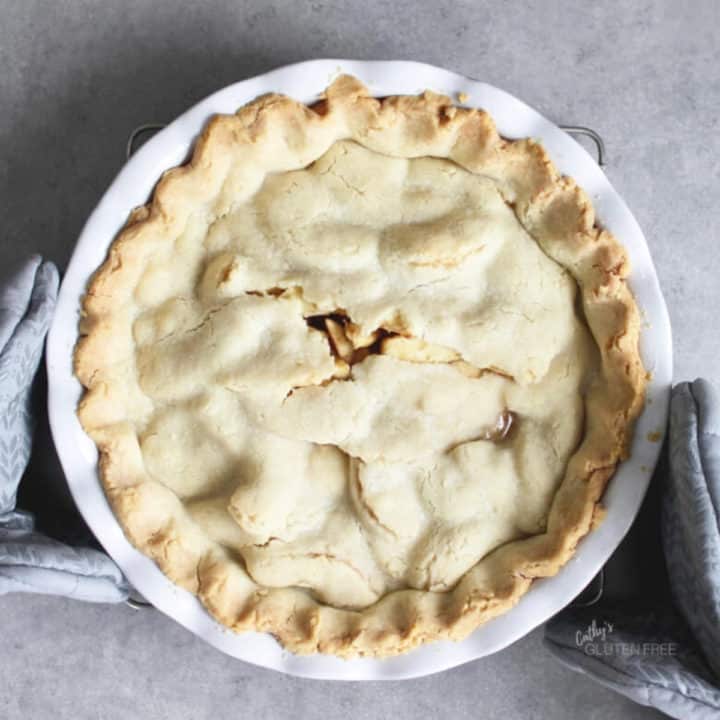
Jump to:
This recipe works for (almost) everyone!
Besides being gluten free, this pie crust is also free from dairy, nuts, and nightshades (if you don't use potato flour as a substitute for tapioca). And, it's a gluten free pie crust without xanthan gum!
History of a Very Special Pie Crust Recipe
It all began when I discovered a very amazing, special pie crust recipe from Marty Curtis in his Marty's World Famous Cookbook. In the book, he details how the century-old nuns' pastry dough recipe was passed down through his family. We enjoyed visiting his cafe in the Muskoka region of Ontario, Canada, and eating his famous butter tarts back in my gluten-eating days.
Gluten Free Pie Crust
As it turns out, the recipe converts very well for gluten free pie crust! It's been my little, not-so-secret secret for years! I give you detailed instructions with photos and video below, so you can make your own, too.
What You'll Need
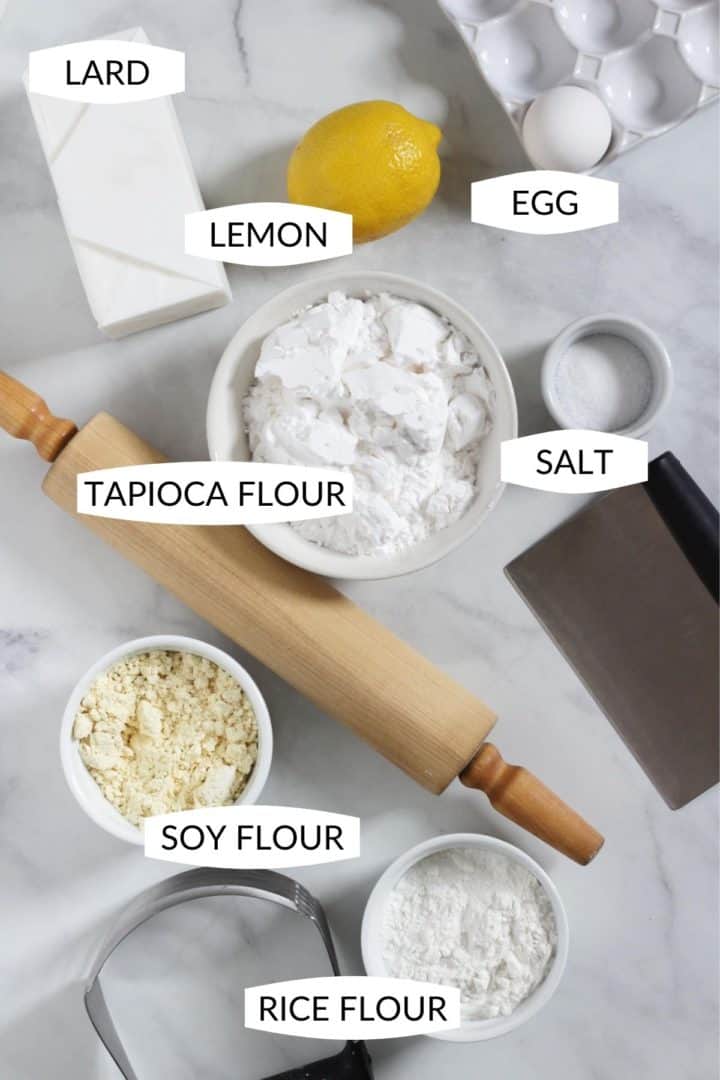
- Tapioca flour - You may substitute some or all of this with arrowroot flour or potato starch (NOT potato flour).
- Soy flour - I use organic soy flour or substitute with chickpea flour.
- Rice flour - Besides the specified amount for the recipe, you'll want to use some extra rice flour for rolling
- Lard - Lard makes this recipe special. It's what pie crust was always made from years ago, until fats took a bad rap from a health standpoint. We now know that we need good fat in our diets for brain health, among many other things. As it turns out, artificial trans-fat, found in commercially prepared food, is the culprit. Lard is a saturated fat. While it should not be consumed in excess, I choose to use it because it's a more natural choice than anything more processed.
How to Make Gluten Free Pie Crust
Separate the egg yolk from the white.
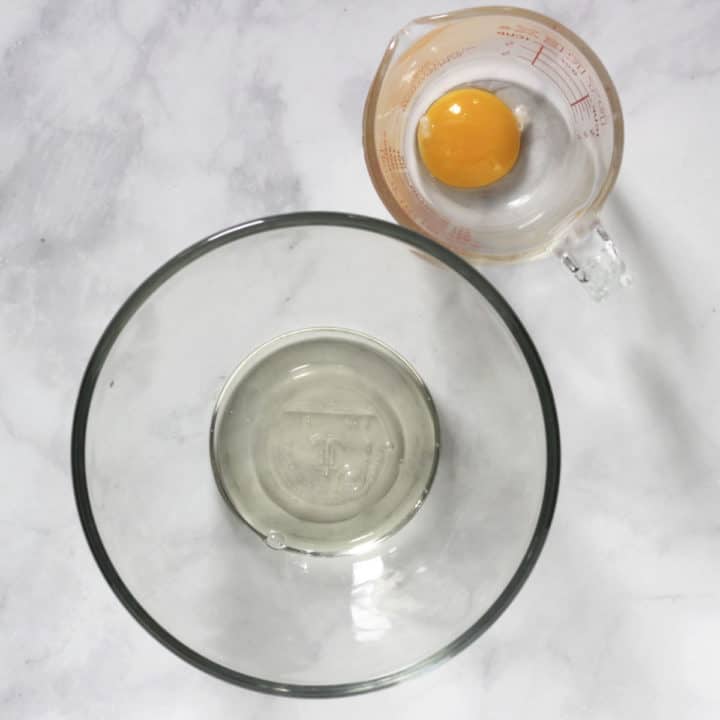
Add the juice of half a lemon to the yolk. Then add enough water to bring the mixture up to one cup (240 ml). Set this into the refrigerator until you're ready to use it.
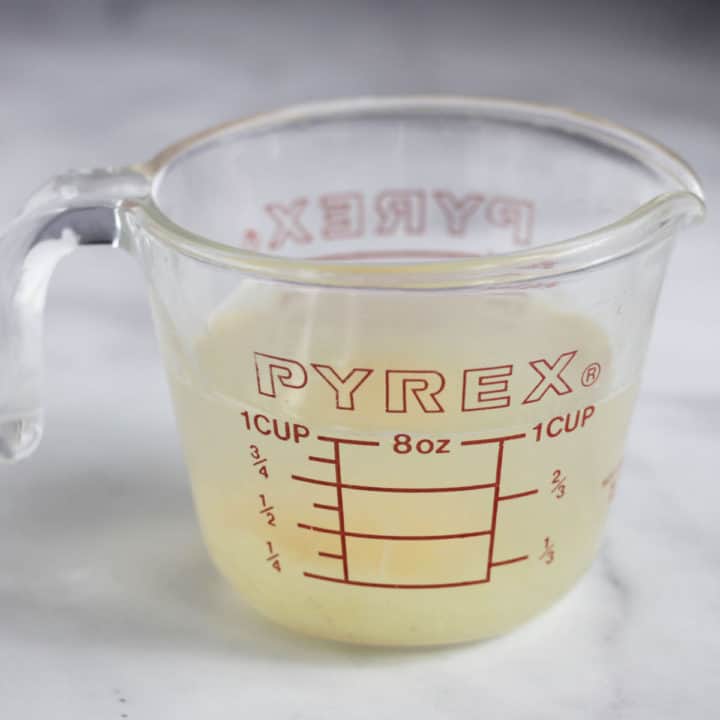
Whisk the flours and salt together.
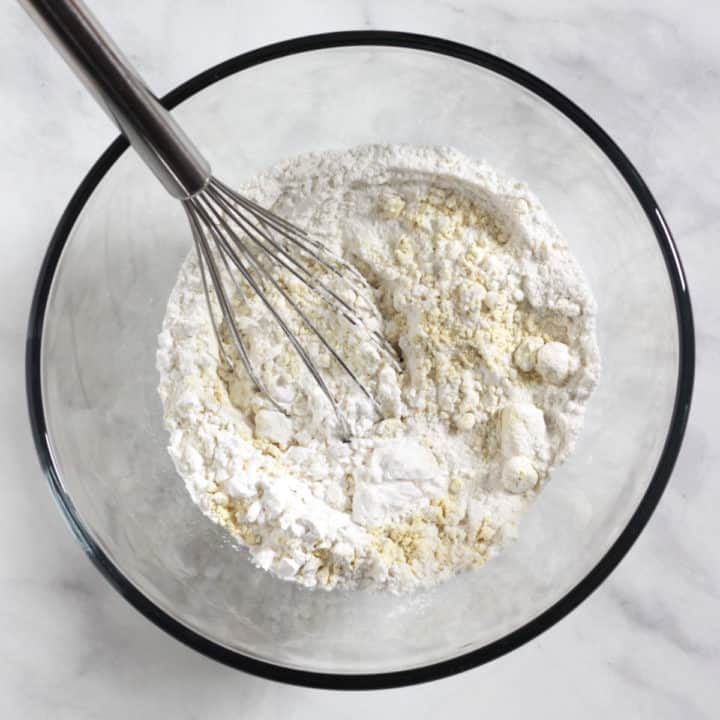
Cut the lard into the dry flour mixture with a few strokes of a table knife.
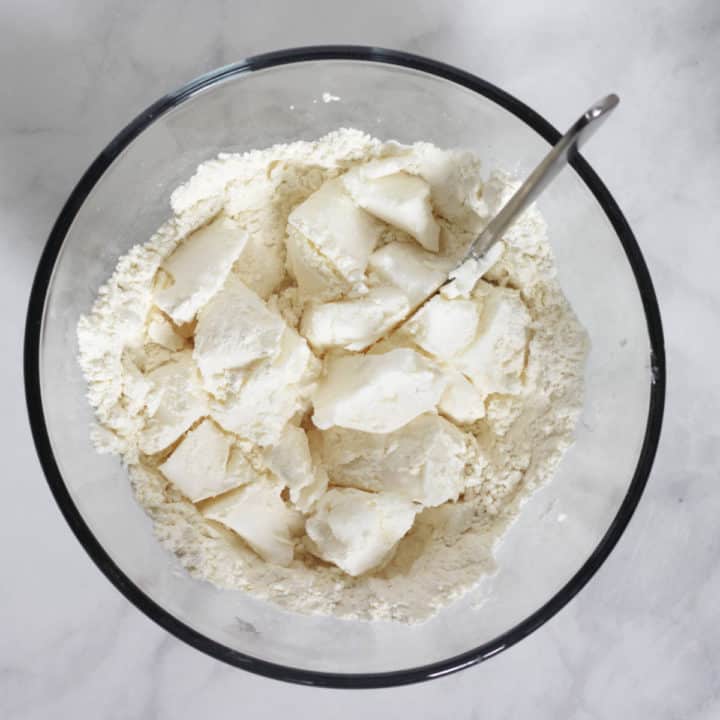
Then, continue to work it in with a pastry blender until it forms lumps about the size of peas.
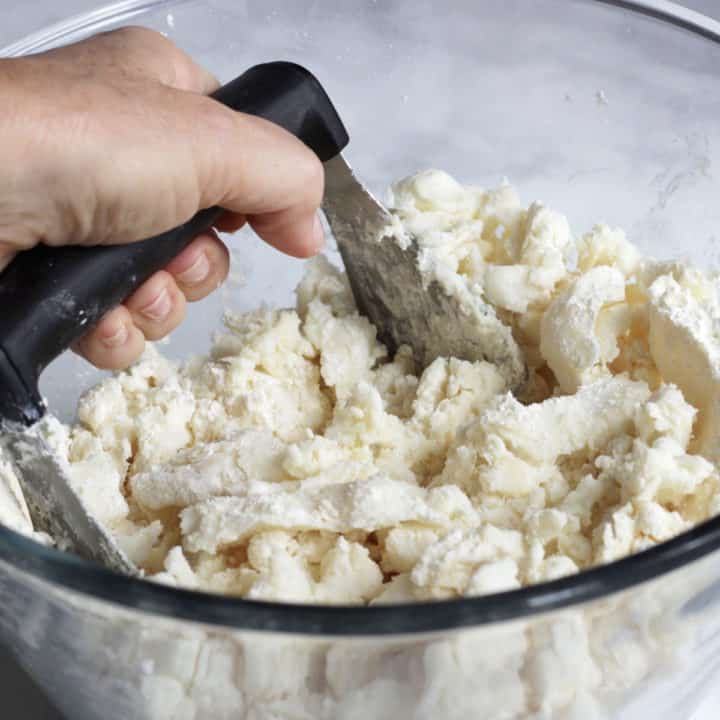
Remove the egg yolk-lemon-water mixture from the fridge, and stir it with a fork or small whisk.
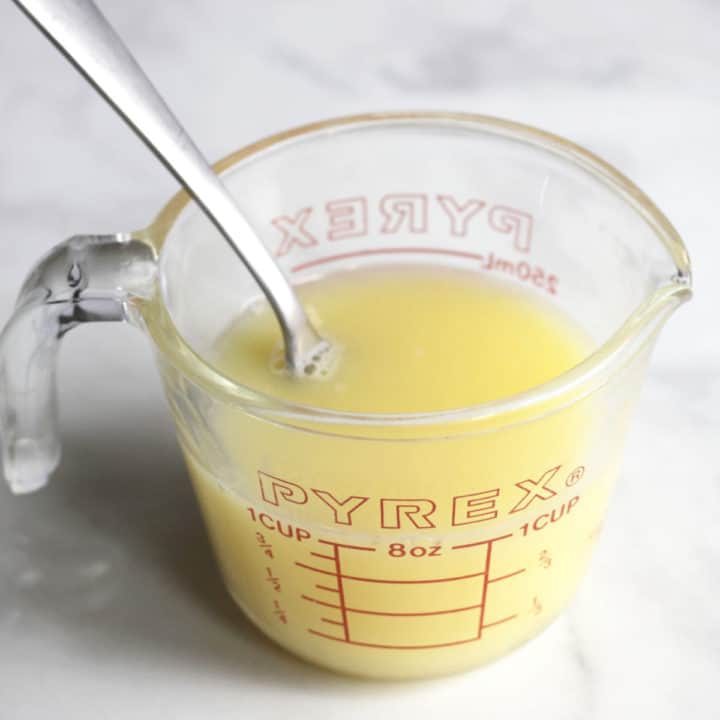
Pour it over the flour-lard mixture and stir it together 7 or 8 times.
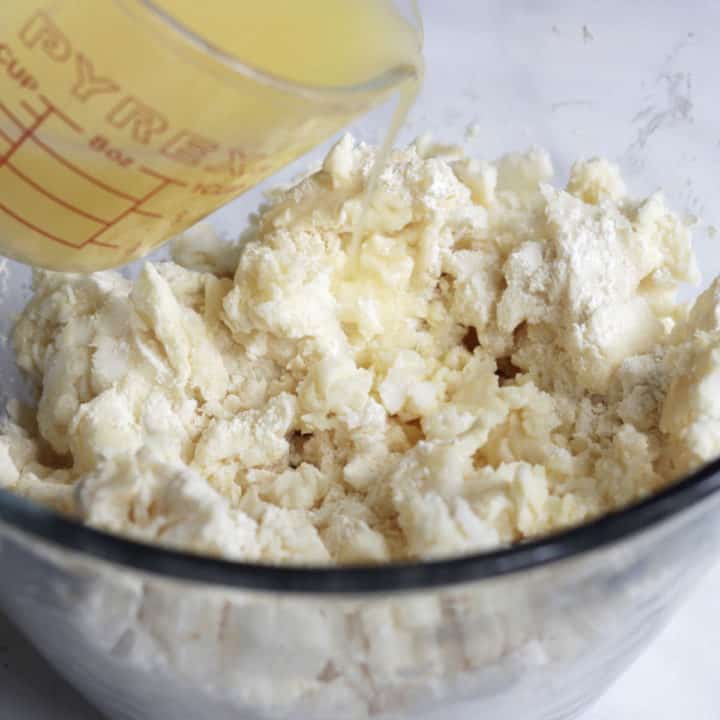
Whisk the egg white until it's foamy.

Pour this over the dough mixture.
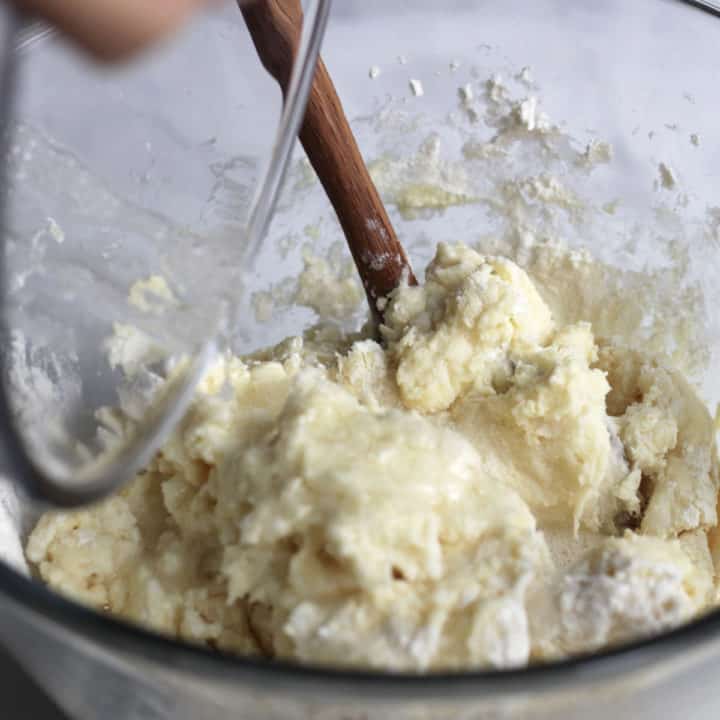
Stir the egg white in with just a few strokes. It will be somewhat spread throughout the dough, but not completely incorporated. Cover the dish with plastic wrap and refrigerate the dough for at least an hour.

For a single pie crust, take about one-fourth of the dough and form it into a rough ball. You'll likely have excess to cut off around the edges to reuse for another crust.
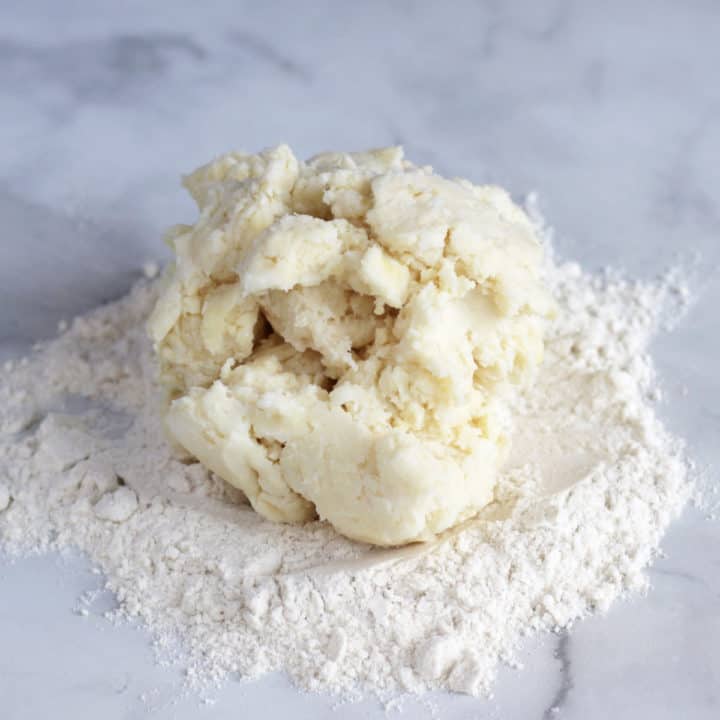
With plenty of any of the flours used in this recipe on the rolling surface and the rolling pin, roll out the ball of dough evenly in all directions. Turn it over a few times, adding more flour on top and bottom to keep it from sticking, until it reaches the desired size a little larger than your pie plate.
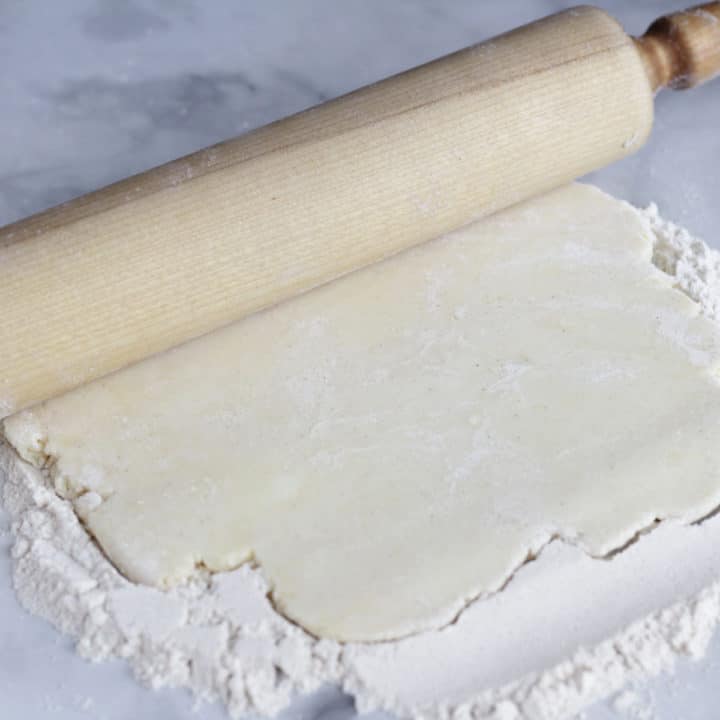
When your pie crust has been rolled out to the correct size, fold it over the rolling pin to aid in lifting it over the pie plate.
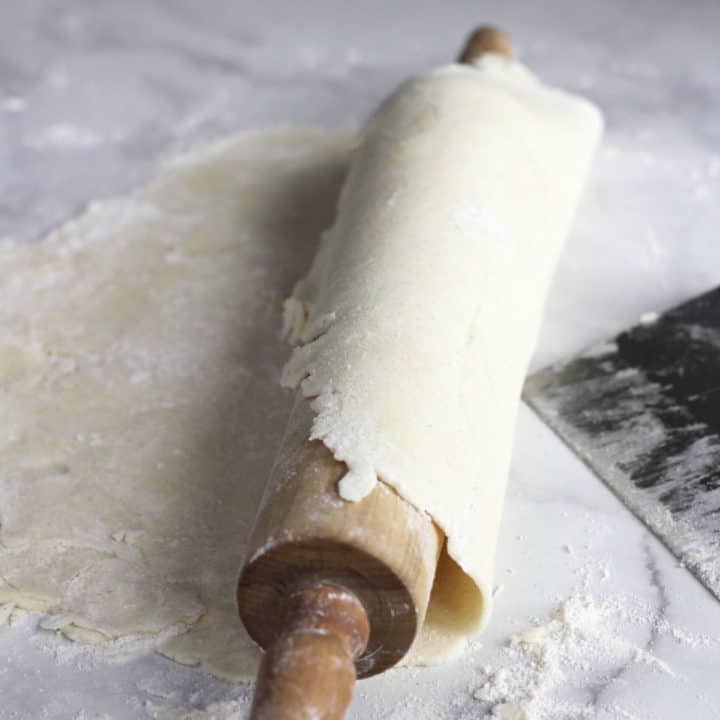
Then unroll the crust, letting it slip into the pie plate. Trim off excess dough from edges, leaving enough to turn under and crimp if you're making a single-crust pie.
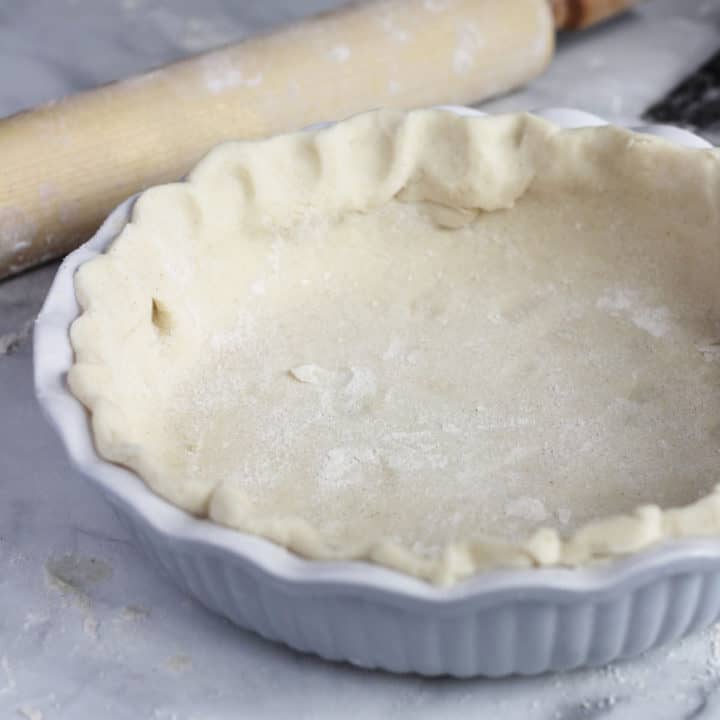
Recipe FAQ's
Yes, this crust freezes well, either rolled out and in a pie plate or packed into a dough ball. Either way, make sure that it's well sealed in an airtight wrapper.
Yes, the dough will keep well, completely wrapped, in the refrigerator for up to a week. It can then be rolled out for pies or tarts.
Or, it could be rolled into a crust or tart shells, covered to seal out the air, and refrigerated for a day before filling and baking.
Small cracks can easily be fixed with a patch. Just put lots of flour on top of your patch before you roll over it. If it's a big mess, don't be discouraged! Just pack it all back together in a ball and start over with more flour. This becomes much easier with practice!
Yes! This is the crust that I use for my Gluten Free Butter Tarts.
As with all pie crust, it’s important not to handle the dough too much. When you cut the lard into the flour mixture with a pastry cutter, you want to leave it in tiny balls about the size of peas. Combine the egg mixtures into this flour mixture very gently, so the fat is just evenly distributed but no more. It’s the little bits of fat popping with the heat during baking that make the “flakes” we want in our pie crust. If you overwork the dough or use a food processor, your crust won’t be as tender or flaky as it could be.
Because this dough will be very moist and sticky, it’s important to refrigerate it for at least an hour before rolling it out. Not only will it become easier to work with, but also you’ll be handling it less and keeping it tender and flaky. I like to mix my crust dough the day before I plan to actually make the pies. That way, I've broken up the tasks of pie making into smaller, more manageable ones, too.
Blind baking is the baking of a pie crust before filling it. This recipe makes a soft dough. It needs extra flour and pie weights for blind baking. For the details on how to do that, go to my Blind Pie Crust recipe. For all of your pre-filled pies and tarts, this recipe as it is here is ready-to-go awesome!
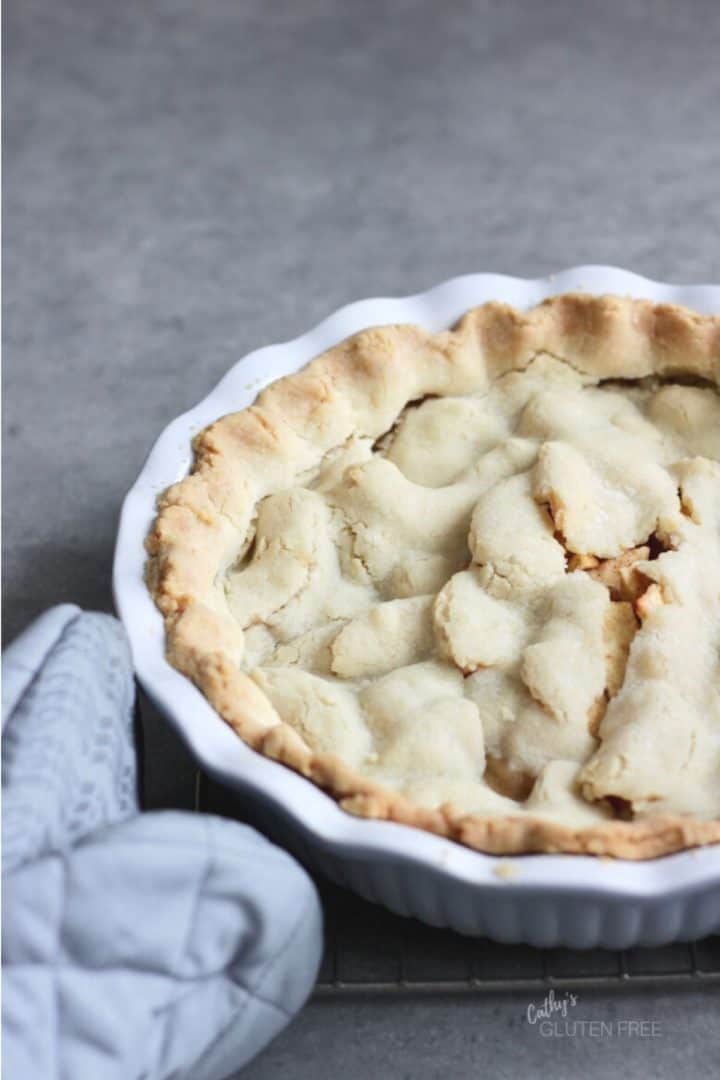
Looking for gluten free pie ideas?
- Pear Pie
- Pumpkin Pie
- Pecan Pie
- Apple Pie
- Peach Pie
- Raisin Pie
- Lemon Meringue Pie
- Strawberry Rhubarb Pie
- Gluten Free Butter Tarts
- Tourtierre
- Beef Pot Pie

Recipe
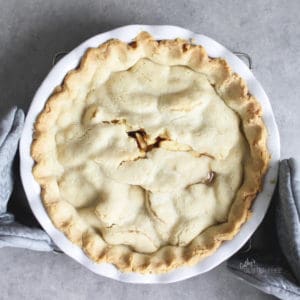
Equipment
- pie plate
- Rolling Pin
Ingredients
- 1 large egg separated
- juice of half a lemon
- cold water
- 2 cups (250 g) tapioca flour (or 1 cup tapioca flour plus 1 cup arrowroot or potato starch)
- 1 cup (85 g) chickpea flour (or organic soy flour)
- 1 cup (145 g) white rice flour plus more for rolling
- 1 tablespoon (18 g) fine sea salt
- 1 pound (454 g) pure lard
Instructions
- Separate the egg, putting the white into a mixing bowl and the yolk into a 1-cup (240 ml) measuring cup. To the yolk, add the juice of half a lemon and enough cold water to bring it up the one-cup (240 ml) mark. Chill this in the refrigerator while combining the flours. Leave the egg white at room temperature.
- Whisk together the flours and salt.
- Cut lard into the flour mixture until it is in lumps about the size of peas.
- Whisk the egg white until it is foamy.
- Add the yolk mixture to the flour mixture and stir about 7 or 8 times.
- Pour the foamy egg white over all and stir a few more times until the dry part is just barely all incorporated.
- Cover this dough to seal out the air, and chill in the refrigerator for an hour or overnight.
- On a well-floured surface (Use any of the flours used in the recipe), roll out the dough for pies or tarts.
Video
Notes
- I don't recommend reheating this pie crust. It will remain lighter and flakier if served at room temperature. If you've had your pie refrigerated, just pull it out an hour or two ahead to take the chill off.
- This pie crust can be made a few days ahead. Wrap it in balls in airtight wrapping and keep it in the refrigerator until you're ready to roll it out for pie or tarts.
- If you'd like to save some pie crust for more than a few days, just wrap it well and freeze it for up to a few months. Take it out to thaw for a couple of hours before trying to roll it out. Or, thaw it overnight in the refrigerator.
- Please note that the nutritional information is for a whole single pie crust, not just one serving.


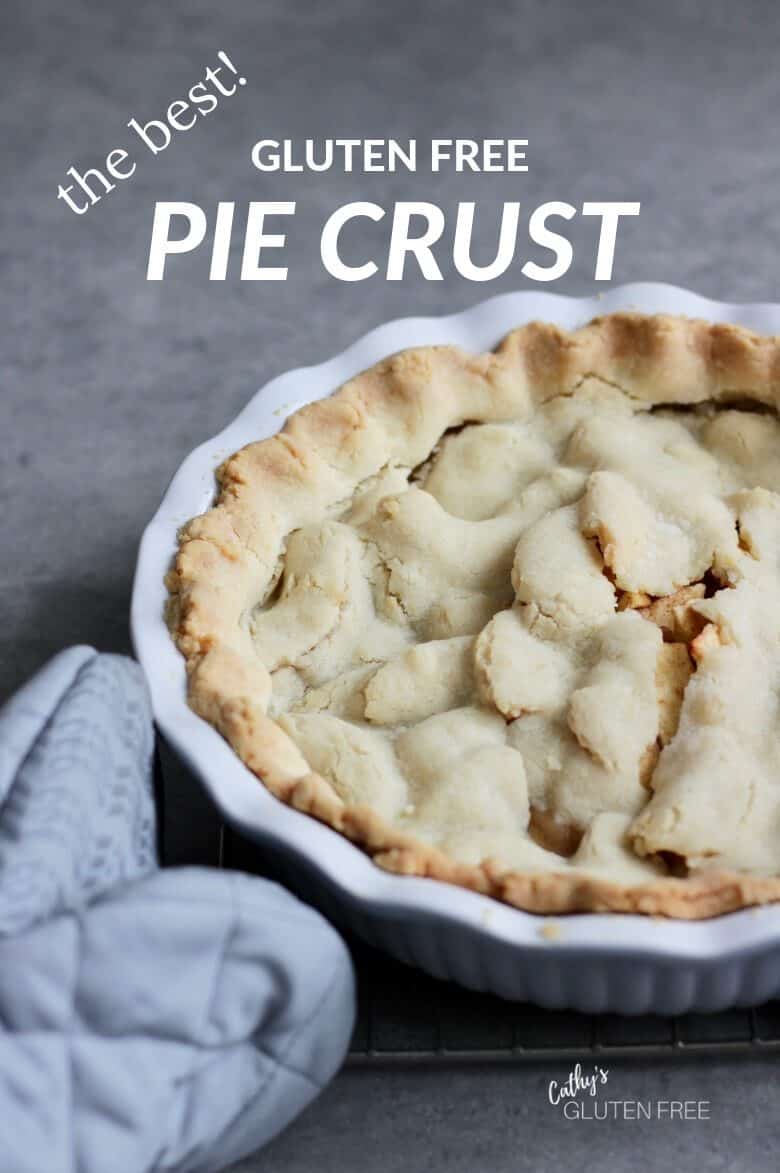
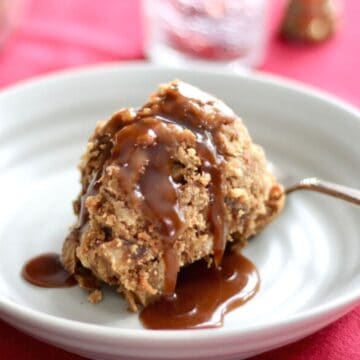
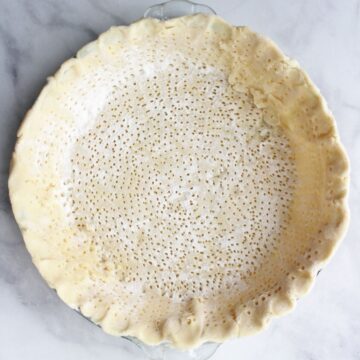
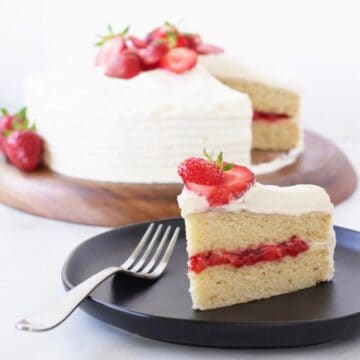
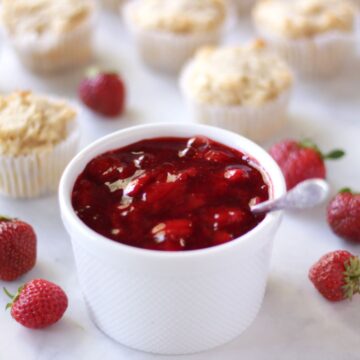
Sara says
Can’t do chickpea or soy. Any other suggestion?
Cathy Brak says
Although I haven't tried these myself, you might try quinoa or buckwheat flour in place of chickpea or soy. Either would change the taste a little, but I'm guessing the texture might be okay. I hope one of these works out for you, Sara.
Thia Tsuruta says
I don't use lard, and substituded butter. It really didn't go well. It rolled out, but then couldn't be lifted into the pie dish. I ended up refreezing it, and molding it into the pie dish. It was interesting using molasses in the recipe. We can't taste it at all. I'll be trying other gluten-free recipes for the Lemon Meringue Pie I've made using "CthysGlutenFree" recipe- that's a nice one!
Cathy says
Thank you for sharing your experience with me. As I haven't tested this recipe with butter, I can't say how it should turn out. However, any time the pie crust seems too soft to handle, you can use more flour both under and over it as you roll it out. Hot, humid weather can also make a pie crust very soft to handle.
I'm confused about the mention of molasses, as there is none in this recipe.
I'm glad that you liked the lemon meringue pie.
Audrey says
I am just learning to cook gluten free and this is the first pastry recipe that has turned out well. The dough is very easy to work with and tastes great!
Definitely a keeper. Looking forward to trying some of your other recipes.
Thank you !
Cathy says
Thank you for sharing this with me, Audrey! Isn't it great to have a gluten free pastry that tastes good!
Sandy says
Hi how long do u bake the pie for and at what temperature?
Cathy says
Thank you for your question, Sandy. The time and temperature for baking a pie depends on what kind of pie you're making. For instance, I would bake a covered, apple pie made with raw apple slices for 10 minutes at 425 F and then about 30 to 35 minutes at 350. For a covered pie with a previously cooked filling, I might just cook it for 30 minutes at 425 F.
Chantal Berube says
Hi Kathy,
I will try an make your gluten free meat pies for xmas. My sister is celiac. If I use a quality gluten free flour mix and follow this the same steps you think it will turn out the same?
Cathy says
I haven't tested the pie crust recipe with any flour mixes, but I think it should work pretty well. Look for one that has similar ingredients to the ones in my recipe. As I'm sure you can understand, it's difficult to predict exactly how the crust will turn out unless I try each individual gluten free flour mix. I hope everyone enjoys the meat pies!
Jamie Meyers says
Hi Cathy,
Used the recipe for peach pie, replaced the chickpea flour with barley and the tapioca flour with cassava flour. It smelled and looked good until my husband had a piece of the crust. It was salty because of the table spoon of salt. A teaspoon should have been good. I will use the recipe again with the alteration of the salt and it should be good.
Erin says
Cathy thank you, this recipe looks delicious and I'm excited to try it 🙂 I'm also wondering about the lard. I've had to eliminate dairy and most animal fat from my diet. Do you think I could substitute coconut oil? Thank you for sharing!
Cathy says
You could try coconut oil. I would recommend trying to have it in a slightly soft but solid form similar to lard as you form the crust. I'm concerned about the crust becoming too soft. It might also become hard when refrigerated. I'd be very interested to hear how it turns out, though!
Ileana says
Can the chick pea flour be replaced by another flour, except almond?
Cathy says
The chickpea flour can easily be replaced with soy flour in this recipe.
Sandy says
LARD, I have high cholesterol and high blood pressure is Crisco OK to sub?
Cathy says
You could try Crisco, but I don't think your pastry will be quite as good. I would encourage you to study the latest research on fats and cholesterol. It's looking like lard isn't the culprit after all. 🙂
Sara says
Agreed
Cathy says
Thank you, Sean! When you're restricted to gluten free foods, the motivation is pretty high to create good ones!
Sean@Diversivore says
Excellent work Cathy! I'm always impressed by the work that you go through to put together these recipes. Good food experimentation is always appreciated by me (and by anyone gluten-free, no doubt!). The combination of flours sound really interesting - especially the chickpea flour, which I've had in a number of baked goods and really enjoyed. Cheers!
Terri says
This is a great option for family gatherings- my aunt is celiac and loves pie! Thanks!
Cathy says
I'm happy to share it with your aunt! I'm sure she will enjoy it!
Leslie says
It's all about the lard in pie crusts right?! Chickpea flour is a new twist on a gluten-free pie crust. I will have to pass this along to my GF family members to try out this season. Looks great.
Cathy says
Yes, lard seems to be the secret! The chickpea flour doesn't have a strong flavour, and the crust doesn't have the pasty taste that a lot of gluten free baked good have.